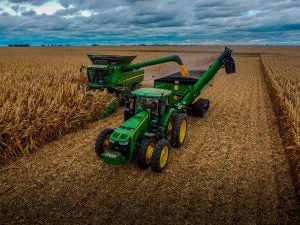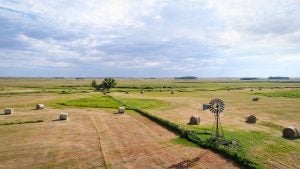“U.S. agriculture was better than most U.S. industries entering the recession, was less affected by the recession than most other U.S. industries, and is well positioned to continue to do well in the years ahead.”
That is the opening sentence of a 2012 U.S. Department of Agriculture report about the impact of the 2008 economic meltdown on the farming industry.
Strong balance sheets, export opportunities, and productivity gains in farming were all factors that the government cited to predict that “U.S. agriculture [is] likely to continue to grow despite the sluggish economic recovery.”
The USDA’s 2012 prediction was correct, and it wasn’t alone in singling out agriculture’s resiliency in tough times.
The Federal Reserve Bank of Kansas City noted in 2010 that, thanks in large part to agriculture, “Rural America was at the forefront of economic recovery” and helped to counterbalance economic distress in other areas of the country and sectors of the economy.

It should come as no surprise that agriculture emerged from one of the worst recessions since the Great Depression even stronger. After all, people must eat whether times are plentiful or scarce.
In fact, worldwide food demand continues to rise alongside population growth, even as the supply of farmable acres per capita shrinks.
Consider this: the United States had 2.43 arable acres for every person in the country in 1961, according to data from the World Bank. By 2018, that number had plummeted to 1.19 acres.
Globally, farmable acres have fallen from 0.89 to 0.45 acres per person over the same period. And supply may be further constrained in the years to come due to water and weather challenges.
Meanwhile, the United Nations predicts that the number of mouths to feed will grow from 7.7 billion in 2019 to 8.5 billion in 2030 and 9.7 billion by 2050.
That’s why our company invests in farmland, which represents a rare sector that combines rising demand with shrinking supply. We mostly buy farms from other landlords, not direct operators, then lease the land back to local farmers to do what they do best.
Such investments have historically performed well during times of distress. I often refer to farmland as gold with a coupon — an asset whose appreciation acts an inflation hedge while still providing rental income.

Green Street Advisors, a research company that specializes in commercial real estate, looked at the farmland sector as an investment class in a 2021 report. It found that over the last 30 years, farmland delivered steady returns, outperformed other investments during recessions, and exhibited less volatility than equities or most commercial real estate sectors.
Look no further than farmland’s recent results.
While the pandemic hit the country hard, farmland remained a near-zero vacancy sector. And we continue to see economic strength on the farm in the face of headwinds hitting our country, like inflation, rising interest rates, supply chain disruptions, and the ongoing conflict in Ukraine.
Agricultural commodity prices are up, farm exports are setting record highs, farmer incomes remain strong, and, unsurprisingly, farmland values have hit all-time highs.
It’s impossible to know for sure whether the current trends will continue and agriculture will emerge from the latest economic downturn as strong as it did the 2008 crisis. But I do know it’s a sector I believe in deeply and have proudly invested in for decades.
After all, gold with a coupon is a desirable place to be when troubled times inevitably emerge.
Author Paul Pittman is chairman and CEO of Farmland Partners Inc., the nation’s biggest farmland real estate investment trusts by U.S. acreage. The company owns and/or manages approximately 185,000 acres in 18 states.


